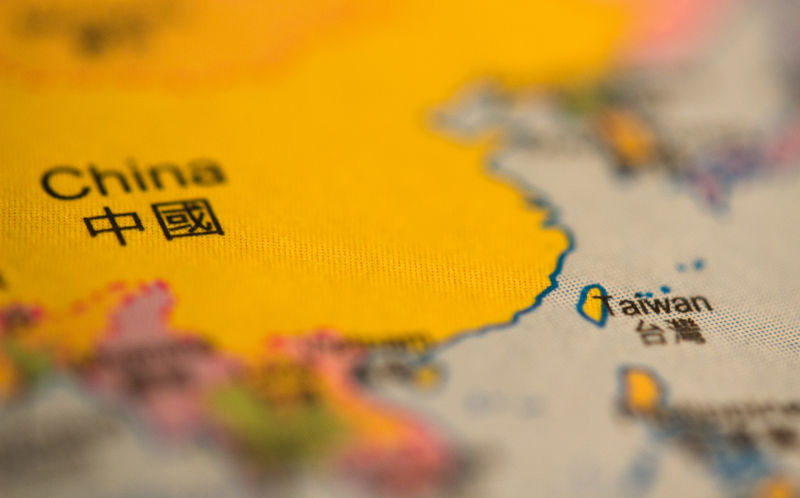The debate about Independence for Taiwan
May 22, 2023
I participated in the drafting and negotiation of the document of recognition of the Peoples Republic of China (PRC) and was personally responsible for some of the practical aspects of dismantling the diplomatic representation of Republic of China (ROC - Taiwan) in Canberra. It might be helpful, therefore, if I offered some clarification regarding the One China Policy and the status of Taiwan.
The status of Taiwan as a province of China was not established by agreement on recognition of the PRC by the USA in 1979. The formulation used was identical to that which we had thrashed out in negotiation with the PRC seven years earlier, under which Australia agreed to the One China Policy.
For centuries Taiwan had been a province of China, before it was captured by Japan in WWII. It was formally and legally restored to the sovereignty of China (Republic of China - ROC) under the Cairo and Potsdam Declarations after the defeat of Japan (1945).
With the defeat on the mainland of the forces of the Nationalist (KuoMinTang - KMT) by the forces of the Communist Party of China (CPC) in the civil war that had raged between the two sides throughout WWII, the KMT transferred the ROC government to Taiwan. The USA threatened the use of nuclear bombing to prevent the final defeat of the KMT. The conflict was about which side was the legitimate government of China. The one issue that they agreed on was that Taiwan was a province of China.
After the CPC established the PRC in 1949, most of the world came gradually to recognise it as the legitimate government of the whole of China (including Taiwan). Both Australia (1972) and the USA (1979) acknowledged the PRCs position that Taiwan was an integral part of the sovereign territory of China and, as a consequence, withdrew recognition of the ROC and dismantled diplomatic representation in the respective capitals.
It was agreed that exchanges at less than political, government level could continue. Under the Taiwan Relations Act, the USA pledged to provide Taiwan with the means to defend itself against any use of force to resolve the question of which claimant was the legitimate government of the whole of China.
The PRC accepted that Taiwan would have the status of a self-governing province (Special Autonomous Region) which became known as the One China Two Systems policy.
Similarly, the United Nations Organisation voted by overwhelming majority that the PRC should occupy Chinas seat in the General Assembly and the Security Council and that the ROC-Taiwan would not be recognised by the UN as a separate sovereign entity.
After a long period of dictatorship by the KMT, Taiwan evolved a system of Parliamentary and Presidential elections with competing parties. The Democratic Progressive Party (DPP) emerged as the main competitor to the KMT. Under the leadership of its Chair, Tsai Ingwen, who was trained, funded and nurtured by the CIAs regime-change organisation , the National Endowment For Democracy (NED), the DPP increasingly espoused a policy of working towards independence for Taiwan.
The extent to which the people of Taiwan support such a policy is very dubious.
Surveys conducted by Taiwan university NCCU Election Studies Centre 1994 - 2022 have consistently found that voters who want to maintain status quo indefinitely, plus those who want to maintain status quo and decide at a later date, plus those who want to maintain status quo whilst moving slowly toward independence, make up a combined total of over 80 per cent of the population of Taiwan.
Those who want unification as soon as possible are a tiny percentage but those who want independence as soon as possible are also a tiny percentage.
Moreover the DPP was so thoroughly defeated at the recent county and municipal elections that Tsai Ingwen resigned as Chair of the Party, although she held on to her position as President of Taiwan at least until the presidential elections in 2024.
Whether or not the current legal status of Taiwan as a province of China is felt to be acceptable, is simply moot, in the face of two immutable facts of current reality:
- The PRC is implacable that the status quo must be maintained and that it will resist, by military means if necessary, any internal or external attempt to remove Taiwan from Chinas sovereign territory.
- The USAs declared intention is to block Chinas rise through a proxy war. Its preferred strategy is to trigger such a war by pushing for independence for Taiwan.
The PRCs policy has remained the same since 1949 and was formally restated as recently as the 20th National Peoples Congress in October 2022. The idea that there is a timetable for reunification by 2030 is an American construct and not part of official PRC policy.
Thus, support for self determination for the people of Taiwan, and strenuously opposing any war over the status of the island, are mutually exclusive propositions. Any encouragement to Taiwan to try for independence simply moves the prospect of war closer.
The best contribution Australia can make to the avoidance of war is to make it absolutely clear to the USA, Taiwan and the PRC that Australia will not participate in a war over the status of Taiwan and will not allow Australian territory, facilities or assets to be used in the prosecution of such a war.

